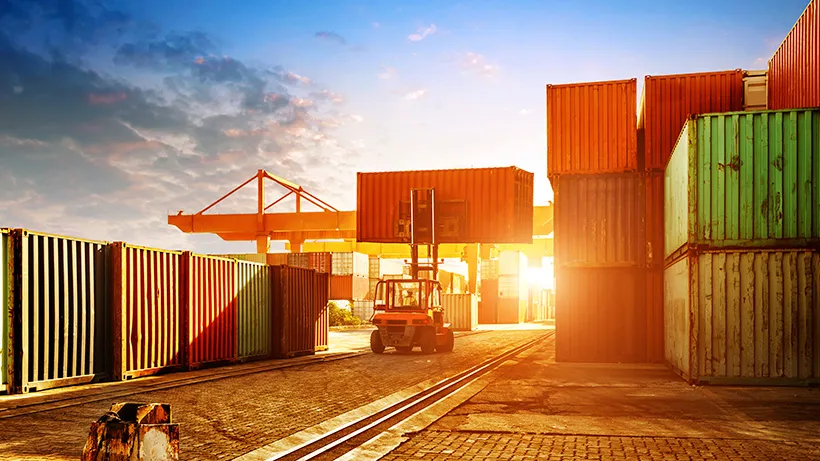Finnish companies need guarantees for over a hundred countries

Companies should pay attention to economic sanctions and currency shortages in some export destinations.
In recent years, Finnish enterprises have been active in finding new export destinations where they need various financing arrangements.
Finnvera has financial commitments or guarantee applications pertaining to 102 countries. As many as half of these are classified as exotic. Raija Rissanen, Vice President, Country and Bank Risks at Finnvera bases her definition of an exotic country on distance, culture and differences in operating environment.
The new destinations have also aroused many questions that companies hope to have answered by financial institutions. In particular, the questions apply to economic sanctions and currency shortages.
“These are fairly new issues for companies. If a company wants a pre-payment from the buyer, it’s worth considering which channels to use for the transfer. Banks do not accept money from all countries. Now there are also more and more countries that have profitable enterprises but cannot get foreign currency for paying their import invoices,” Rissanen lists.
As examples of emerging economies that suffer from sanctions, Rissanen mentions Cuba and Myanmar. These countries have invested heavily in tourism. Russia and Iran are more traditional export destinations that are also subject to economic sanctions.
Currency shortages, in turn, plague Nigeria, Egypt and Venezuela. Previously, Argentina also suffered from the same problem.
Even though Finnvera has financial commitments in more than a hundred countries, Rissanen still finds many potential destinations where Finns are conspicuous by their absence.
“For instance, the financial situation is good in small countries of the Caribbean and Asia.”
Major changes in destinations
Commitments as such do not tell the whole truth about the destinations of Finnish exports. Rather, they indicate the priorities of guarantee and financing needs.
There have been many changes in export financing since the start of the millennium. Apart from the emergence of exotic countries, virtually the whole top of the list has changed.
“At the turn of the millennium the list was topped by China, Thailand and the Philippines. Now, Russia, Brazil and the USA are there. India and Turkey are also rising,” Eeva-Maija Pietikäinen, Head of Trade Finance, lists.
In her view, the reasons are clear. China arranges the financing of orders itself, and Russia’s country exposure has accumulated after the mid-2000s. The rise of the United States, in turn, is an indication of large ship orders.
“Exposure statistics reflect large projects that show in our records for years. Most of our commitments concern buyer credits. This means that the credit is granted directly to the Finnish exporter’s buyer-customer abroad. The bank provides the financing and Finnvera shares the risk with the bank,” Pietikäinen explains.
“Such credits are often worth tens or even hundreds of millions euros,” she continues.
The greatest figures are derived from telecommunications, orders for various machines and equipment, shipbuilding, the forest and energy industries, but the role of SMEs is accentuated in the number of transactions.
According to Pietikäinen, to protect their sales receivables, companies use credit insurance and letters of credit for the smallest transactions SMEs have not yet found the newest countries where the economy is booming.
“SMEs export mostly to European countries where companies must turn to private providers of credit insurance. EU legislation prohibits Finnvera from granting credit insurance for exports to European countries and a few countries outside Europe. From our point of view, Russia is the most active credit insurance market for SMEs,” says Pietikäinen.
Finnvera’s outstanding guarantee commitments for export financing amount to EUR 16.5 billion.
FACT: Protection mechanisms for SMEs
- It pays for SMEs to use secured payment terms when doing business, or to protect their sales receivables, in order to avoid credit losses.
- The most common protection mechanisms are credit insurance, letters of credit and the Bill of Exchange Guarantee.
Credit insurance: Finnvera grants credit insurance directly to the export company. The exporter signs an agreement with Finnvera. The insurance is suited to continuous, short-term trading.
EU legislation prohibits Finnvera from granting credit insurance for exports to European countries and a few countries outside Europe. See the list here.
If the risks are realised, the insurance includes a self-risk portion of ten per cent. The company can seek compensation after a payment delay of 90 days provided that the claim is uncontested.
Credit insurance also suits small transactions: For example, Finnvera has credit limits of EUR 10,000.
Letter of credit: A letter of credit means that the buyer-customer’s bank undertakes in writing to pay the purchase price to the seller, i.e. the bank issues the letter of credit. Similarly, the seller has an agreement with its own bank, which confirms the letter of credit. The bank, in turn, can share the risk associated with a foreign bank with Finnvera by applying for Finnvera’s Letter of Credit Guarantee. In all cases, the exporter does not necessarily know that a Letter of Credit Guarantee has been used.
Bill of Exchange Guarantee: A Bill of Exchange Guarantee is ideal for fairly small capital goods transactions and continuous exports.
The bill of exchange serves both the exporter and the buyer because the exporter is paid in cash while the buyer is given payment time. Finnvera’s Bill of Exchange Guarantee, in turn, protects the bank from any credit losses that might arise.
The exporter applies for the guarantee from Finnvera and submits credit data and financial statements on both the buyer and the guarantor, if any, over the past three to four years.
It is essential that the financing is planned well in advance before the export transaction. In this way it is possible to select the payment method that suits each deal.
Read more about the Credit Risk Guarantee and the Export Receivables Guarantee
Also, read more about the Bill of Exchange Guarantee
See Finnvera’s country categories here
Text: Kimmo Koivikko
